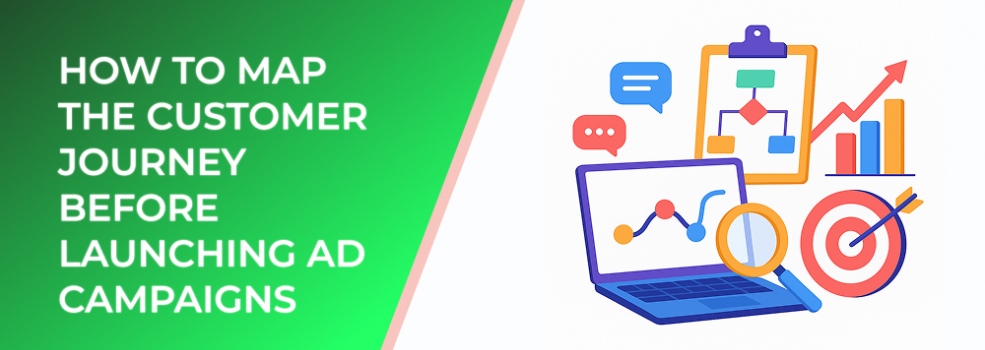Before investing in ads, it’s essential to understand how customers interact with your brand at every stage. A well-structured journey map helps identify the motivations, frustrations, and decision triggers that influence conversions. According to a study by Aberdeen Group, companies with strong customer journey mapping processes experience a 54% greater return on marketing investment and 3.5 times more revenue from customer referrals.

Companies using customer journey mapping report ≈ 54% higher marketing ROI
Mapping the journey allows marketers to align messaging, creative assets, and targeting across every touchpoint—leading to higher engagement and reduced wasted spend.
Step 1: Define Your Stages
Most customer journeys include five main stages: Awareness, Consideration, Decision, Retention, and Advocacy. Define what each stage means for your business. For example:
-
Awareness: When potential customers first discover your product or service.
-
Consideration: When they compare your solution to competitors.
-
Decision: When they take the desired action—signing up, purchasing, or subscribing.
-
Retention: When existing customers stay engaged through follow-up communication.
-
Advocacy: When satisfied customers share your brand with others.
Each stage should include measurable actions, such as clicks, form fills, or repeat visits, to evaluate ad performance effectively.
Step 2: Gather Data From Multiple Sources
Accurate journey mapping requires data from various channels: website analytics, CRM systems, social media engagement, and surveys. According to Salesforce, 76% of consumers expect consistent interactions across departments, yet many brands still operate in silos.
Integrating behavioral and demographic insights allows marketers to pinpoint where users drop off and where ads should re-engage them. Behavioral retargeting, lookalike audiences, and segmentation tools can help refine these steps.
Step 3: Identify Pain Points and Motivations
Every customer journey includes friction points. Maybe users leave your site after viewing pricing or abandon carts due to unclear shipping details. Identifying these drop-off moments helps craft messaging that addresses objections directly.
Surveys, heatmaps, and user interviews can uncover emotional drivers that influence conversions. For instance, if users value social proof, integrating testimonials into ad creatives can improve engagement.
Step 4: Align Messaging and Creative With Each Stage
Each stage of the journey requires tailored messaging:
-
Awareness: Educational or storytelling ads that introduce the problem your product solves.
-
Consideration: Comparison charts, case studies, or testimonials.
-
Decision: Strong CTAs, discounts, or limited-time offers.
-
Retention: Personalized follow-ups, email nurturing, or loyalty programs.
According to HubSpot, personalized calls-to-action convert 202% better than generic ones. This emphasizes how vital alignment between messaging and intent truly is.
Step 5: Test, Measure, and Refine
Mapping the customer journey is not a one-time task. Continuously review how users interact with your ads and landing pages. Use A/B testing to experiment with creative variations and targeting options.
Regular analysis ensures your campaigns stay aligned with real user behavior. The more you refine your understanding of the customer path, the more efficient your ad budget becomes.

